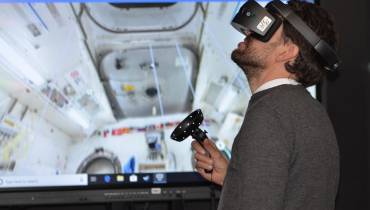Different Ways Criminals Are Using AI in Cyberattacks

In this modern world, the lives of people are greatly dependent on technology. Artificial Intelligence (AI) is one of the latest technologies that captures the mind of people worldwide.
However, as artificial intelligence enters into the mainstream, there is misinformation, confusion, and concerns about AI, what it is capable of and the potential risks it poses.
Many people do appreciate the potential of AI and the improvements it brings. For businesses that are adopting AI, deployment is simpler and efficiency higher. But, AI’s access to volumes of data and it’s increasing measure of autonomy poses some serious risks, which should be considered.
With the increasing adoption of artificial intelligence technology in various fields, its negative applications are sadly also increasing. For example, AI could be used for malicious cyber-attacks rather than defensive ones.
By leveraging AI, criminal hackers nowadays are able to cloak themselves and know when to attack. They may hijack security solutions like captchas and image recognition to deploy malware, phishing, and whaling attacks. All the while, these bad actors may hide their activities via AI-powered systems.
Risks Posed by AI
According to research by the Centre for the Study of Existential Risk (CSER), an interdisciplinary research center within the University of Cambridge, AI not only raises near-term concerns of privacy, bias, inequality, and safety, but also emerging threats and trends in global cybersecurity.
Accidental bias by the creators of AI systems is not uncommon and it can be ingrained by successive AI programmers on any specific data set. Regrettably, this bias can lead to poor decisions and discrimination, which can attract legal consequences as well as reputational damage.
Incorrect AI design can also lead to making decisions that are either too ‘general’ or too ‘narrow’ that can be a problem. In fact, according to CSER, most current AI systems are ‘narrow’ applications – specifically designed to tackle a well-specified problem in one domain. They cannot learn and adapt to a very broad range of challenges, which is a problem.
The above-mentioned risks and others can be mitigated by establishing human error early through rigorous testing of AI systems during the design phase, and by closely observing the AI systems when they are functioning. Keep in mind that the decision-making capabilities of AI must be properly scrutinized, measured, and assessed to ensure that any emerging bias is addressed speedily.
Moreover, as AI systems become more powerful and more general, they may become superior to human performance in many domains, which is arguably a threat to everything we love about the current civilization that has humans at the top and in charge of all domains.
These kinds of threats may be viewed as unintentional errors and failures in design and implementation. But there are other sets of risks that emerge when people purposely and knowingly try to corrupt AI systems or use them as weapons or tools for nefarious actions.
Nowadays, corrupting an AI system is seemingly becoming easy and a recurring threat. Hackers can simply manipulate datasets and then use them to train AI systems to make predetermined changes to parameters or take certain malicious actions that are carefully designed to avoid raising suspicion.
Where hackers lack access to datasets, they may employ AI to bypass security blocks, say by corrupting inputs to compel mistakes and security breakdown. Improvising the input data to make exact identification is not so easy, but AI systems can manipulate and bring about misclassification.
Various Ways Criminals Use AI
In our digital world, bad hackers are increasingly turning to AI to launch malware and cyber attacks. They are attacking to counter the numerous advancements made in cybersecurity solutions.
Hackers can predefine an app feature as an AI trigger for implementing cyberattacks. Most of the applications used today consist of features, and this offers hackers great opportunities of feeding malicious AI models in these features.
Here are some more examples of the different ways criminals use AI for their attacks:
1. Cybercrimes using AI chatbots
Chatbot have become a hot trend on digital platforms because many people prefer to text rather than talk on the phone. Cybercrimes have made their way to this area as well.
Malicious actors can hack and program AI chatbots to imitate a genuine conversation with users with a view to sway them to disclose their personal information and even financial details.
2. Malware created with Al
Nowadays, hackers can develop undetectable malware using AI. With this, the hackers can take over control of webcams, surveillance systems, and personal computers to scan, steal, upload, modify and even manipulate files.
In addition to this, the criminals can also write codes for computer viruses, make use of password scrappers, and also use various other tools to execute malware.
3. AI Phishing & Whaling
Sometimes, you might receive an email that does not seem to be quite right, such as getting fake emails from people claiming to be from your bank or bogus phone calls from AI’s mimicking human voices. A hackers and criminals adept at impersonation may be able to do all this very convincingly.
AI and machine learning (ML) technologies can also be deployed by malicious actors who good at coding and HTML to help in improvising and improving the process of phishing. They can achieve this, say, by crawling digital platforms and then producing several fake emails based on given observations.
4. AI cracking of passwords
An artificial neural network (ANN) is a computing system designed to simulate the way the human brain analyzes and processes information. It is the foundation of artificial intelligence that helps to solve problems that would prove impossible or difficult by human or statistical standards.
ANN can be corrupted and used by criminals to detect passwords without authorization. Usually, criminals try to crack a portion of passwords by using artificial neural networks systems that easily guess passwords for sensitive accounts owned by targets.
With AI, it becomes quite easy for the machine to crunch numbers and predict people’s passwords. Always try to make your passwords as strong as possible and not at all easy to guess even by machines. You can do this by using different special characters to create a strong password.
5. AI automation to facilitate criminal activities
Serious crimes including trafficking and buying and selling of banned drugs is rising. Criminals driving these illegal industries are now relying on the latest AI technologies, including automation and navigation planning technologies to improve the success of their activities.
Criminals are even using unmanned vehicles to smuggle contrabands across borders.
How to prevent AI cybercrimes
Some of the best tips and ways to prevent cyberattacks associated with AI include:
- Use strong passwords that are not easy to guess even by AI systems, consisting of alphanumeric and special characters. Moreover, change your passwords from time to time.
- Use a strong antivirus on all your computers and servers, etc. This can also be a good way to detect attempts at malware attacks.
- If you are suspecting any cybercrime activity at the office, inform the management promptly to evaluate log data for swift response and protection mechanisms.
- Data security training programs may sensitize and increase employee knowledge.
- Keep all system properly updated with latest security features.
- Shut down unnecessary systems that you do not use.
- Stay extra vigilant always online at all times.
Understanding how criminals may use AI to attack will help in protecting ourselves. Also, carefully scrutinizing the in-built protocols in your AI systems can help to prevent AI abuse.
In the end, if we all stay vigilant and take the appropriate preventive measures, we can avoid many of these sophisticated AI-powered crimes and keep ourselves safe online and offline.















![7 Inspirational Quotes to Uplift You [INFOGRAPHIC] young-woman-inspired-notes-smile-inspiration-quote](/sites/default/files/styles/video_thumbnail_bottom/public/young-woman-notes-smile-inspiration-quotes.jpeg?itok=DqYtOSE1)






